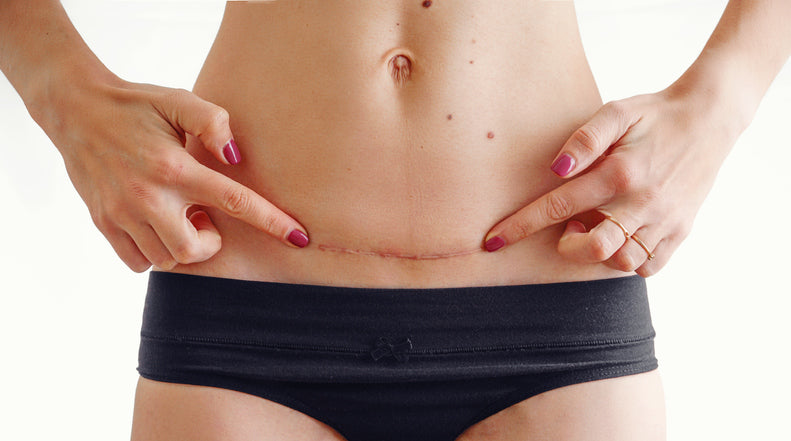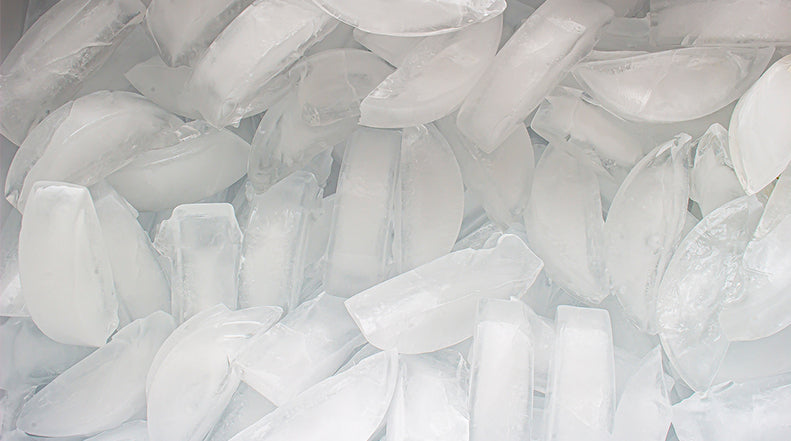Is Silicone Sheeting or Gel Better For Scars?

Topical silicone products represent a safe and effective treatment option for healing scars. Two of the most popular formulations are topical silicone gel and silicone gel sheeting. Both have been studied in numerous clinical evaluations that have demonstrated these products to be a successful treatment for a variety of scar types, both old and new. Such scar types include keloids, burns, hypertrophic scars, and scars from trauma, cosmetic procedures, C-sections, and abdominoplasty.
A common question is whether silicone sheeting or topical silicone gel is better for scars. To answer this question, we’ve evaluated the literature regarding these scar treatment options and have summarized the information below.
SILICONE GEL SHEETING
Silicone gel sheets are rectangular sheets that are solid yet soft and flexible. One side contains an adhesive that allows the sheet to be easily attached to the skin. The material is capable of allowing moisture and oxygen pass through.
According to a publication in the journal Advances in Wound Care, the key mechanism by which silicone gel sheeting heals scars is by replicating the occlusion properties of the stratum corneum (the uppermost layer of skin). When a wound is healing, a complex process unfolds that ultimately results in regeneration of the stratum corneum. The new, immature, stratum corneum allows abnormally high levels of transepidermal water loss, which causes dehydration. The state of dehydration signals to various cells in the epidermis to synthesize and release collagen. Unfortunately, when the body produces too much collagen, the result is a raised, discolored sar.
Applying silicone gel sheeting to a scar provides the newly formed, underdeveloped stratum corneum with improved occlusion and aids in retaining optimum water levels, which normalizes hydration of the scar site to that of healthy skin. When the skin is properly hydrated, cells will not be signaled to produce collagen, thus decreasing the risk of scar formation.
Another way that silicone gel sheeting helps heal scars is by transferring tension from the edges of the wound to the silicone gel sheet. Gently reducing this tension provides the ideal environment for normal scar development and can significantly reduce the rate of abnormal and keloid scarring. (Adv Wound Care . 2015)
One advantage of silicone gel sheets is that they can cover a large area at once, making them ideal for large scars, burn scars, major abrasions such as road rash, and scars that do not form a straight line. Plus, once the sheet is applied it can be worn for up to 24 hours before having to apply a new sheet.
On the other hand, silicone gel sheets cannot be applied to mobile areas of the body, such as the elbows or knees, as they will not adhere to these areas well. Plus, most patients prefer not to put a sheet on visible areas of the body, such as the face, neck, or hands. Finally, the sheets cannot achieve and maintain adequate contact with scars when applied to skin with an irregular contour. (J Korean Med Sci. 2014) In these scenarios, a topical silicone gel would be more appropriate.
TOPICAL SILICONE GEL
Topical silicone gel formulations work similarly to sheets in order to promote scar healing. Upon application, the gel forms a thin layer that dries quickly, creating an occlusion that increases hydration of the stratum corneum.
Gels are advantageous because they can be applied to scars on visible areas such as face, neck, and hands. Additionally, gels are perfect for areas of frequent motion that are too difficult to attach a sheet to.
A drawback of a topical silicone gel is the time needed for the gel to completely dry after application. Even though this only takes a few minutes, it is more time-consuming than applying a sheet. Also, patients must apply the gel at least two to three times daily as well as reapply after bathing, swimming, or exercising.
IS SILICONE SHEETING OR GEL BETTER FOR SCARS?
Only a few studies have compared the effectiveness of topical silicone gels versus that of silicone gel sheets in preventing scars. One prospective study published in the Journal of Korean Medical Science compared the efficacy and the convenience of use of these two silicone products.
This study enrolled 30 patients who had undergone a surgical procedure 2 weeks to 3 months before joining the study. Participants were randomly assigned to 2 treatment arms: one for treatment with a silicone gel sheet and the other for treatment with a topical silicone gel. The patients’ scars were evaluated by independent observers based on vascularity, pigmentation, pliability, height, pain, and itchiness. The patients also completed questionnaires about any scar-related pain, pruritus, color change, hardness, thickness, overall size, irregularity, and inconvenience of use they experienced. The scores from the observers and the patient questionnaires were evaluated at 1 and 3 months, followed by comparison to baseline measurements. Results from this study revealed two important findings:
- No significant differences in efficacy exist between the two products
- Topical silicone gels are more convenient to use
The conclusion of this study was that while previous studies have advocated for silicone gel sheets as first-line therapies in postoperative scar management, similar effects can be expected with topical silicone gel. The authors recommend that, when clinicians have a choice of silicone-based products for scar prevention, they should focus on each patient's scar location, lifestyle, and willingness to undergo scar prevention treatment.
Overall, it’s clear the both silicone gel sheeting and topical silicone gels represent effective treatment options for scar management. NewGel+ offers both silicone gel and sheets, as well as many other products that have been shown to improve the appearance of scars. Not sure which NewGel+ product to choose? Shop our products based on scar location.




Comments